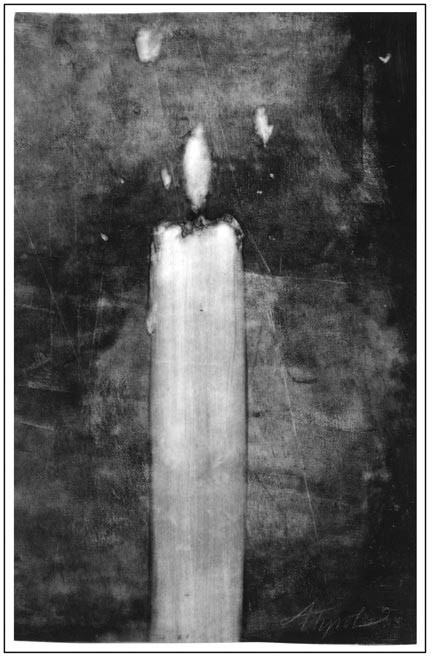
Jim Hedbor, of Grand Isle County, Vermont, has been collecting moths for decades, but he has a distinct memory of one special night of moth hunting. He was on Cold Hollow Mountain in northern Vermont. It was the darkest of nights. “There was not an artificial light to be seen,” he said.
Hedbor’s basic moth trap is a bright light shining on a white sheet. When he returned to his trap that night, he found dozens of Vermont’s largest and most colorful moths. There were luna moths (which have pale green wings that can span over four inches), cecropia moths (reddish-brown wings tipped with tan and dotted with eyespots, spanning five inches), and other moths in the giant silkworm family. Of course, with this set-up, the moths were trapped by nothing but the light itself. When Hedbor turned the light off, the spectacular insects flew off into the night.
Why are moths attracted to artificial lights? People have wondered about this since ancient times. The way a moth is drawn to a candle flame has symbolized destructive attraction since at least Shakespeare’s day.
Because of this age-old fascination, it may be no surprise that one of the most enticing explanations for the phenomenon is over 100 years old. Many scientists believe that some moths navigate a landscape of air currents and wafting scents using the moon as a compass.
The idea is simple: if a moth flies at a 45-degree angle to the moon, the brightest object visible, it can fly in a straight line for a very long distance. You may have noticed this phenomenon if you’ve ever driven a long distance on a straight road. Miles later, you can still see the moon (or the sun) in the same spot out the car window. For the moths, the degree of the angle they fly varies, of course, depending on where they want to go.
But when a porch light or a campfire is the brightest thing the moth can see, this navigation system falls apart. Because the light is so close, relative to the distance of the moon, the moth can’t fly in a straight line for long. Flying at the same angle to a nearby source of light guides the moth in a circle. That circle gets smaller the closer the moth is to the light, until the moth is in direct contact with the light bulb, still circling.
It’s a theory backed up by everyday observation. Moth hunters like Hedbor have noticed that it’s easiest to catch moths when your trap is the only light around. That’s why his night on Cold Hollow Mountain was so successful, he guesses. Even competition from the moon can cut down on the number of moths caught, said Hedbor. “The dark of the moon is best for collecting – also cloudy nights.”
Another theory states that some moths settle down near bright lights because the light fools them thinking that it is daytime. For a moth, daytime is rest time.
Some people have suggested that moths are attracted to light because the night sky is brighter than the bushes and trees, guiding the moths away from predators and entrapment in the underbrush; or that the ultraviolet light given off by bulbs and flames taps into the moths’ attraction to the ultraviolet light reflected by night-blooming flowers.
Moth hunters use both white and black lights, which emphasize ultraviolet light and attract moths. Hedbor knows that some species are more likely to be attracted to one type of light or the other. He marks each of the specimens he collects with the type of light it was caught with.
Some moths, it should be noted, do not come to light at all.
“When you collect a specimen, you are providing a basic unit of raw data,” Hedbor explained. Someday, an interested scientist may analyze his collection, as well as others, and figure out which moths are attracted to broad spectrum light and which to ultraviolet. This could help scientists figure out which theory is correct.
Hedbor uses a mercury vapor light when setting a white-light moth trap. This light has a lot of blue in it, and not much yellow, and the moths seem to prefer it to other types of light, he said. Another potential clue.
While Hedbor has certainly read the various theories on why moths are attracted to artificial lights at night, he hasn’t singled one out as being more convincing than the others.
“I run the lights and the moths come,” he said. “I don’t really question it.”

